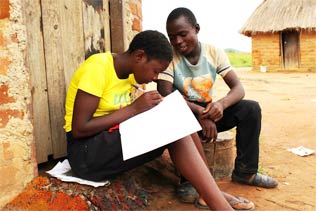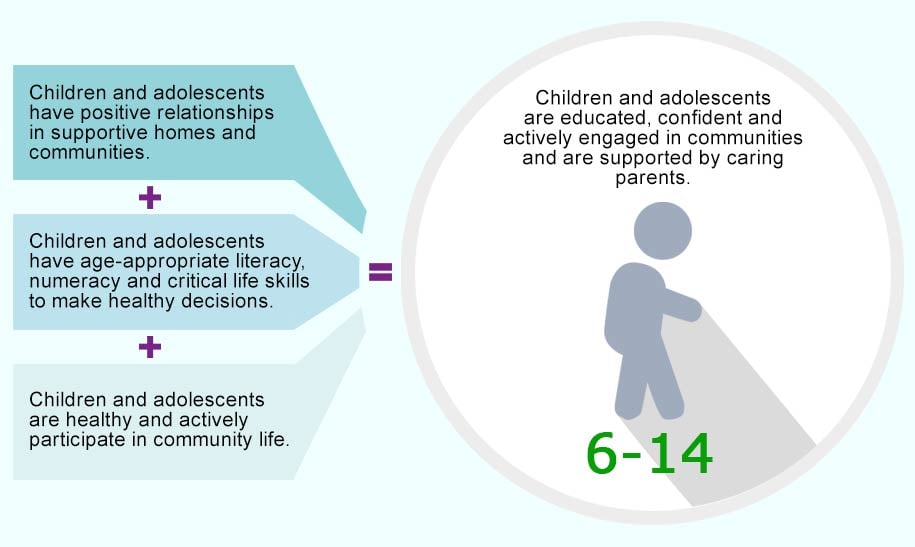Site will be
unavailable for maintenance from June. 4, 11:30 p.m., to June 5, 12:30 a.m. ET. Thank you for your
patience!
Ages 6 to 14

The Primary School and Adolescent Years
During the primary and early secondary school years, children become increasingly independent. They venture outside the family more and make decisions for themselves, and they begin to navigate puberty.

Rodgers, 14, and his sister complete their schoolwork outside their home in Zambia
Accomplishing all of this successfully requires resilience — and even more so for children who face poverty, social exclusion, vulnerability and their attendant risks.
- Worldwide, UNESCO estimates, 57 million primary school-age children and 69 million adolescents are not in school. Fifty-two percent of them are girls. These numbers reflect increases in enrollment in recent years; however, the numbers of children completing their educations reflect no such improvement.
- About 5.5 million children are engaged in forced labor, with more than half performing hazardous work.
- Millions of children witness or experience abuse, neglect and violence at home and in their schools, communities and workplaces.
- More than 17 million children worldwide have lost parents to AIDS.
- Safe, quality, child-friendly health services are too often out of children’s reach.
All of these factors and more put children at higher risk for chronic health problems, poor school performance and continuing patterns of violence, neglect and abuse — all of which disrupt their development.
ChildFund’s Theory of Change for Ages 6 to 14

Our Approach
Children ages 6 to 14 account for the majority of children ChildFund serves. As children in this age group become more independent, they must learn to socialize with other children and adults beyond their immediate families, to make decisions for themselves, to build literacy, numeracy and life skills, to engage in community life. For them to succeed in all of these developmental tasks, continued care and support are vital.
- We promote positive relationships for children within their homes and communities, with programs to ensure the economic security of caregivers.
- We provide opportunities for children to develop reading, math and critical life skills.
- We ensure children and their families have access to child-friendly health services.
- We promote community systems where children’s participation is recognized and their rights protected.
Learn More
Find out about our programs for children ages 6-14 in
Honduras Mozambique Timor-Leste
Dig Deeper
Linking Communities, Strengthening Response Project in Lira and Dokolo Districts | Uganda | 2013
